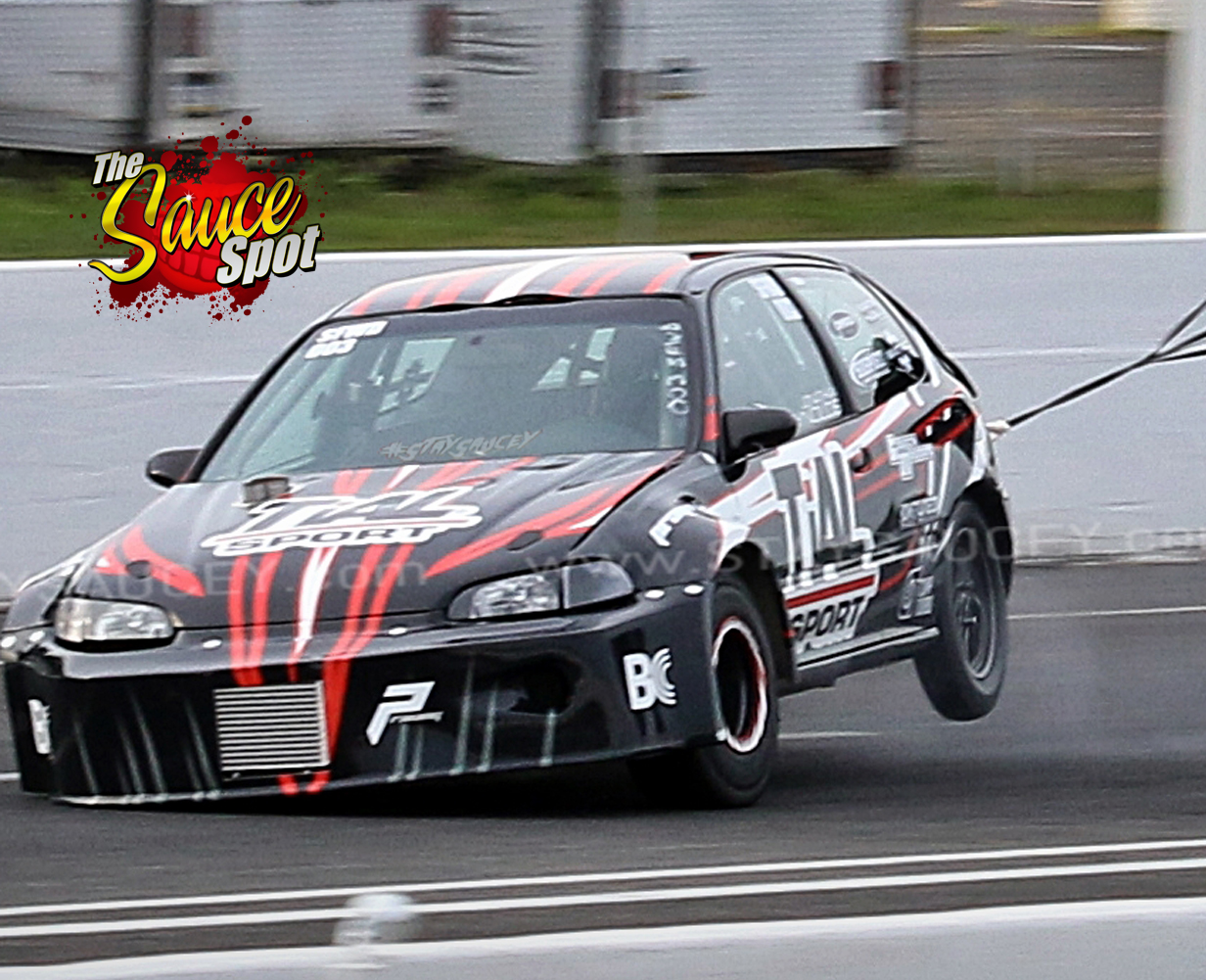
01 Jan Proper Parachute Mounting
Proper Parachute Mounting: Because crashing sucks.
By Brian Gillespie
One of the requirements for fast land speed and drag racing cars is having a drag parachute. It’s used to safely slow the vehicle down from the high speeds on the race course. The key word being “SAFELY.”
When a chute is deployed it can exert more than as 2Gs of force on the car in deceleration. On a typical 2000 lb FWD drag car, that can means 4000 lbs of force jerking on the back end of the car. If the connection point isn’t in the correct place, that can upset the car in a big way, even causing a loss of control.

Hondata’s Doug Macmillan and his team have done a lot of testing, having made dozens of runs in various Hondas from 150-240MPH in land speed and drag racing. It turns out, it isn’t just a matter of connecting it to something solid on the rear of the car. There’s a little math involved.

In this video Professor MacMillan explains the forces involved and shows us how to determine the correct placement for the parachute tow line attachment point on your race car.
For more on the crash of the Tial Civic visit The Sauce Spot’s YouTube page to see the crazy sequence of photos of the resulting crash.
We’d Love Your Support
Like us? Help Support VTEC Academy by hitting up our store for gear at https://vtec.academy/shop/ or help us by sharing (it’s free!) this post or others with other cool Honda people.
Nothing but Hondas. That’s exactly what you’ll find at VTEC Academy. Because Soichiro Honda’s passion for motorsports and his company’s ability to express that in the machines they produce make a whole lot of sense.
VTEC Academy is a place for Honda fans who feel the same way and who seek the most accurate technical information and commentary to continue that very legacy and make whatever Honda it is that they drive just a little bit better. And faster.
The editors and contributors of VTEC Academy are some of the industry’s most experienced and trusted, which means the informative, unique perspectives you need are all right here. And, like you, we’re also obsessed with Hondas.
So, subscribe to our channel and hit us up at vtecacademy.com or, if you’re into social media, you can get your daily dose of VTEC Academy on Instagram, Facebook and Twitter. We’re always on the lookout for cool and fast Hondas.

No Comments